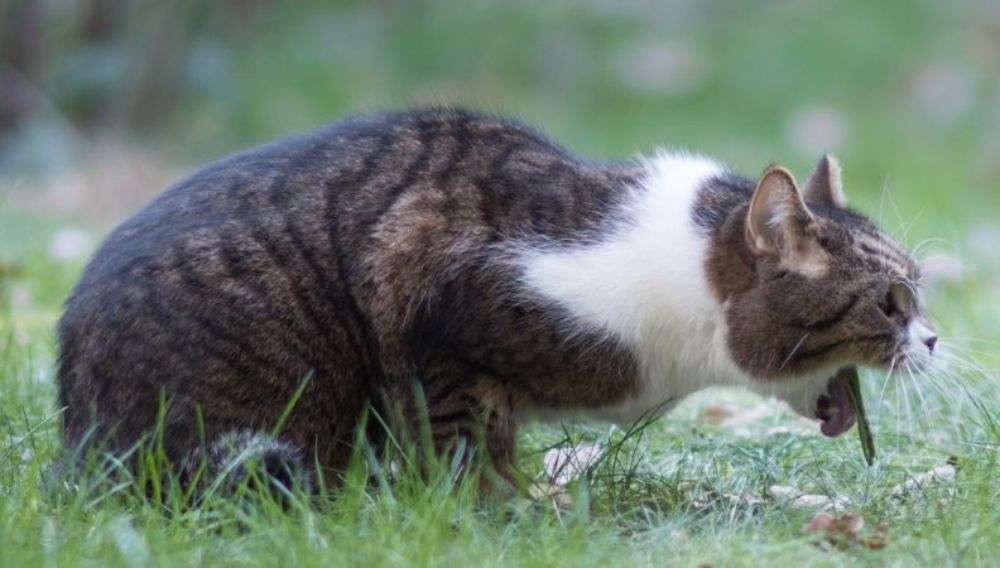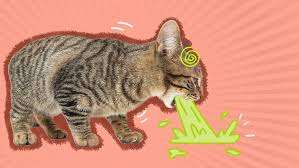Seeing a cat vomit can be concerning for owners. It is natural to worry when a feline companion brings up hairballs, food, or bile, even if they appear perfectly healthy afterward. A common situation many cat owners face is when their cat keeps throwing up but otherwise seems fine , playful, eating normally, and showing no signs of lethargy.
Learn more about: Can cats see in the dark
This article explores the potential causes of this behavior, when it might be serious, how to manage it at home, and when to consult a veterinarian.

Understanding Cat Vomiting
Vomiting in cats happens when the stomach contents are forcibly pushed out through the mouth. It differs from regurgitation, which is a passive expulsion from the esophagus without the abdominal effort. Understanding the difference helps pet owners determine whether the issue is minor or requires medical attention.
Cats can vomit occasionally as part of normal behavior. However, repeated vomiting, even in an otherwise healthy-appearing cat, deserves careful observation.
Common Causes of Vomiting in Cats
Hairballs
Cats groom themselves constantly, swallowing loose fur. The ingested fur can build up in the stomach, leading to the formation of hairballs. Some hairballs pass naturally through the digestive tract, while others are expelled through vomiting.
Signs of hairball-related vomiting:
- Vomiting fur mixed with mucus
- Occasional vomiting, usually after grooming sessions
- Normal energy and appetite between episodes
Eating Too Quickly
Some cats eat very fast, which can lead to regurgitation or vomiting shortly after meals. Cats who gulp their food often bring it back up because the stomach cannot process it quickly enough.
Tips to prevent this:
- Use a slow-feed bowl
- Spread food in small portions
- Feed multiple small meals throughout the day
Dietary Sensitivity
Cats may vomit due to intolerance to certain foods, abrupt changes in diet, or consumption of spoiled food.
Indicators of diet-related vomiting:
- Vomiting after eating a new food
- Mild digestive upset with no other systemic symptoms
- Occurs consistently after certain meals
Hair, Grass, or Foreign Objects
Cats often nibble on grass or ingest non-food items, such as string or small toys. They can upset the stomach lining and lead to vomiting.
Watch for:
- Vomiting shortly after playing or exploring
- Presence of foreign materials in vomit
- Occasional episodes with otherwise healthy behavior
Minor Illnesses
Mild cases of gastritis, minor infections, or general stomach irritation can sometimes cause vomiting in cats. Even if the cat appears well afterward, persistent episodes may indicate that the stomach is sensitive.
When to Worry
Although occasional vomiting may be normal, frequent or ongoing vomiting should be closely monitored. Pet owners should be alert to the following:
- Red-Flag Symptoms
- Lethargy or weakness
- Loss of appetite
- Weight loss
- Diarrhea
- Blood in vomit or stool
- Frequent vomiting (more than once a week)
If any of these occur, it may indicate an underlying condition that requires veterinary attention, such as kidney disease, hyperthyroidism, pancreatitis, or gastrointestinal obstruction.
Understanding “Seems Fine”
A cat that seems fine after vomiting is generally alert, active, eating normally, and interacting with their environment. Many cases of vomiting in such cats are benign. However, owners should note patterns:
- Frequency: Occasional hairball or food-related vomiting is less concerning than daily episodes.
- Consistency: Yellow bile or foam can be a sign of an empty stomach, whereas the presence of undigested food may point to eating habits or possible gastrointestinal problems.
- Behavior: Normal play, grooming, and curiosity are reassuring signs.
Home Care for Cats That Vomit
Monitor Food and Water Intake
Ensure your cat is drinking enough water and maintaining normal appetite. Dehydration can be a serious complication of vomiting.
Tips:
- Offer fresh water frequently
- Wet food can increase hydration
- Monitor for changes in drinking habits
Adjust Feeding Practices
- Smaller, frequent meals prevent the stomach from being overwhelmed.
- Slow-feed bowls reduce rapid eating.
- Avoid sudden dietary changes; transition gradually when introducing new food.
Hairball Management
- Regular grooming reduces swallowed hair.
- Hairball gels or supplements can help hair pass through the digestive tract.
- Encourage play to reduce stress-induced grooming.
Avoid Hazardous Items
- Keep small toys, strings, and plants out of reach.
- Ensure any plants are non-toxic to cats, as some can induce vomiting.
Observe Patterns
- Maintain a record of your cat’s vomiting episodes, including the time of day, what they ate, and any changes in behavior.
- Patterns help veterinarians determine causes more accurately.
Possible Medical Causes
Even if a cat seems fine, frequent vomiting may indicate underlying health conditions. Common medical causes include:
Gastrointestinal Issues
Gastritis, inflammatory bowel disease (IBD), or intestinal parasites can cause intermittent vomiting.
Kidney Disease
Chronic kidney disease may result in occasional vomiting without obvious lethargy in early stages.
Hyperthyroidism
Overactive thyroid can increase appetite and activity while causing vomiting.
Pancreatitis
Inflammation of the pancreas may trigger vomiting, often accompanied by mild abdominal discomfort.
Food Allergies
Some cats develop sensitivities to proteins or additives in commercial diets.
When to See a Veterinarian
If vomiting occurs often, is severe, or comes with other symptoms, take your cat to the vet promptly. Diagnostic tests may include:
- Physical examination
- Blood work and urine analysis
- X-rays or ultrasound
- Fecal tests for parasites
Early detection ensures better management and prevents complications.
Preventing Vomiting Episodes
Maintain a Healthy Diet
- Feed high-quality, easily digestible food
- Avoid sudden diet changes
- Provide fresh water at all times
Groom Regularly
- Brush cats frequently to reduce hairballs
- Long-haired breeds may require daily grooming
Safe Play Environment
- Remove small objects or string-like items
- Keep toxic plants and chemicals out of reach
Monitor Behavior
- Regularly observe eating, drinking, and activity
- Note any signs of distress, unusual vomiting patterns, or lethargy
Special Considerations for Older Cats
Older cats may vomit more frequently due to age-related conditions. Chronic kidney disease, diabetes, and hyperthyroidism are common in senior cats.
Tips for older cats:
- Schedule regular veterinary check-ups
- Monitor weight and appetite
- Adjust diet to support digestion and overall health
FAQs
Occasional vomiting can be normal, especially due to hairballs or rapid eating. Monitor frequency and behavior to ensure it does not indicate an underlying issue.
Dietary changes can help, but do so gradually and under a veterinarian’s guidance to prevent further digestive upset.
Yes, stress can irritate a cat’s stomach and trigger vomiting, even if they appear healthy otherwise.
Vomiting accompanied by lethargy, blood, loss of appetite, or frequent episodes requires immediate veterinary attention.
Occasional hairballs are normal. Persistent hairballs that lead to frequent vomiting may indicate digestive issues or excessive grooming and should be discussed with a vet.
Final Thoughts
A cat that keeps throwing up but seems fine can often be a source of worry, but many cases are benign, such as hairballs or rapid eating. Careful observation, proper feeding practices, grooming, and maintaining a safe environment can reduce vomiting episodes.
However, frequent vomiting, changes in appetite, lethargy, or any unusual behavior should prompt a veterinary visit to rule out medical conditions. By understanding the causes, monitoring patterns, and providing supportive care, cat owners can ensure their feline companions remain healthy, happy, and comfortable.

